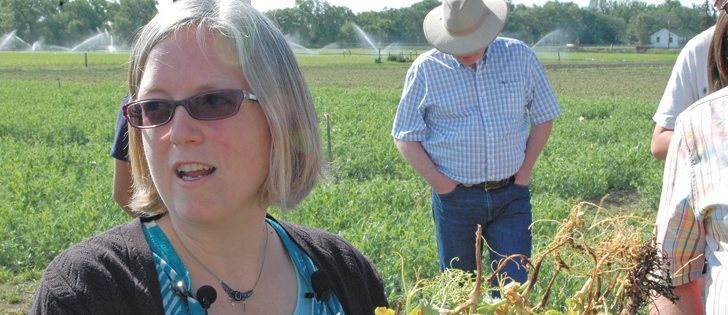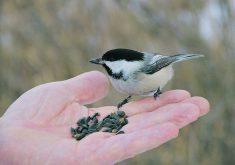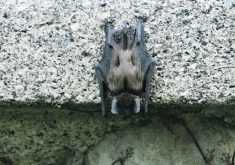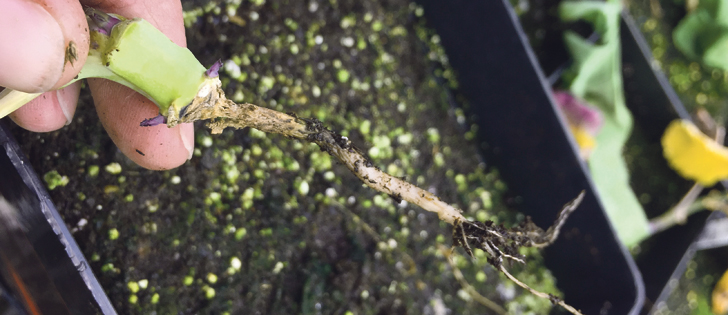Agronomists say conditions are ideal for the development of a variety of crop diseases and one has already become a headache for some pulse growers.
Saskatchewan Pulse Growers has been inundated with calls from agronomists and farmers reporting cases of aphanomyces, a devastating root rot disease in peas and lentils.
Sherrilyn Phelps, agronomy and seed program manager with the grower group, is getting more calls than last year, but not as many as 2014 when the disease exploded onto the scene causing plenty of damage.
Read Also

Bunge’s crop mix is changing
Bunge has predominantly been a soybean processing firm, but that’s about to change after the merger with Viterra with softseed processing and grain merchandising gaining ground.
She suspects one of the reasons call volumes are not as high as 2014 is that people are more informed about the disease, so aphanomyces could be as prevalent as it was that year.
Syama Chatterton, a research scientist with Agriculture Canada in Lethbridge, said she and her colleagues estimate aphanomyces is present in about 40 percent of pea fields in Alberta and Saskatchewan.
“To see that it was present in Saskatchewan and Alberta in about 40 percent of the fields, for a pathogen that we hadn’t really expected to find, was really quite a surprising result,” said Chatterton.
“What it means is that we probably had this pathogen for a number of years and it just never was looked for.”
Aphanomyces is the most difficult to manage of the four root rot pathogens because it can live in the soil for up to 10 years, it is very aggressive and there are no control options other than one seed treatment that only suppresses the disease.
Phelps said it can cause yield losses of 50 percent or more in the fields where it is found.
The telltale signs of infection are a yellowing of the crop, slow growth, caramel coloured roots and poor nodulation. It typically starts in the wettest patches of a field, such a low spots, runoff areas or areas of higher clay content.
“In some cases, it may be across the whole field and that usually means there were problems the last time the peas were grown,” she said.
Sabine Banniza, professor of plant pathology at the University of Saskatchewan’s Crop Development Centre, said growers need some hot and dry July weather.
“I’m sort of a little bit sad because I thought it would be a drier year but if it doesn’t stop raining soon, it could become a real disease issue,” she said.
The only way to determine aphanomyces infection is to dig up the plant and examine the roots.
Chatterton said the honey-brown colour distinguishes it from fusarium root rot, which blackens the roots.
Aphanomyces isn’t the only disease for pulse growers to be concerned about this year. The thick vegetative growth could give rise to foliar diseases such as anthracnose and ascochyta blight, said Banniza.
She advised growers to scout their fields and consider a fungicide.
But aphanomyces is the most immediate concern. Saskatchewan Agriculture’s Crop Protection Laboratory Services has received 25 samples of peas and lentils with root rot, 18 of which have symptoms of aphanomyces.
Barbara Ziesman, provincial plant disease specialist, said the lab can’t test specifically for aphanomyces but the 18 samples contain oospores, which means it is either aphanomyces or pythium. Fusarium was found in nine of the 25 samples.
She said there is a good chance a large portion of pea and lentil fields could be infected this year because pulses don’t like having wet feet and are susceptible to the disease when they are stressed.
There are no control options and it is highly unlikely that infected fields will recover if the weather turns warm and dry.
Growers are encouraged to have their fields tested for the disease because the only effective way of dealing with aphanomyces is to lengthen rotations to a minimum of six years between pea and lentil crops.
The root rot is not a regulated disease like clubroot in canola, but Chatterton said growers’ response should be similar.
“I would say whatever you do for clubroot, do for aphanomyces to try and prevent spread.”
She added that there is no point in regulating it either.
“I think its been endemic here in Alberta. We’ve just never looked for it. So it seems like it’s already pretty widespread. We’ve found it from Foremost all the way up to Peace River.”
















